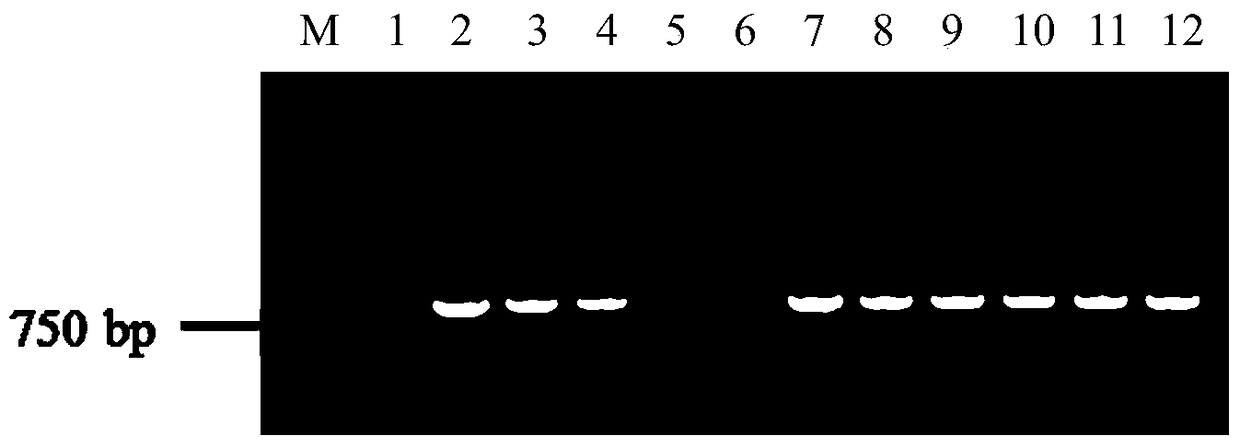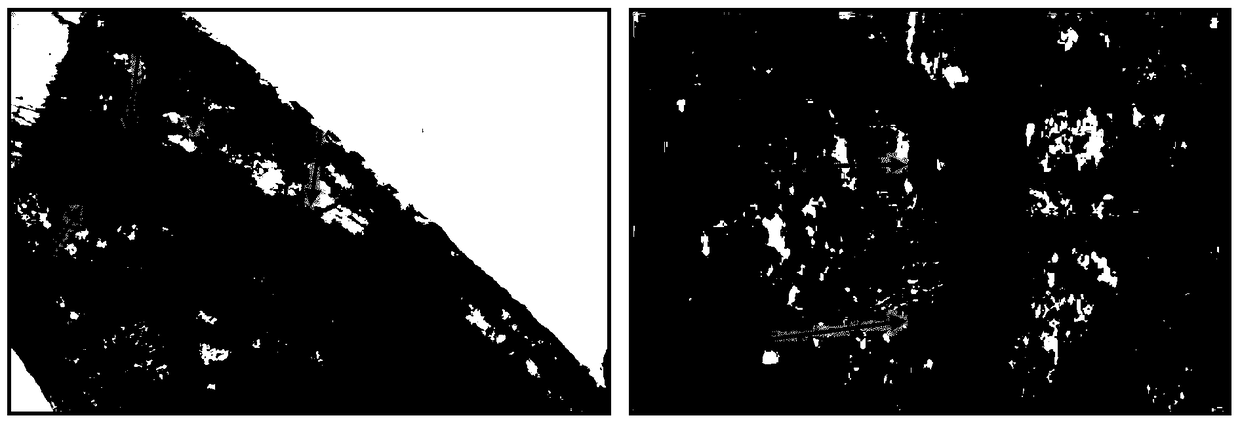aapdr3 gene promoter and its application
A promoter and transgenic technology, applied in genetic engineering, DNA/RNA fragments, recombinant DNA technology, etc., can solve problems such as metabolic waste, harm, and normal plant growth burden
- Summary
- Abstract
- Description
- Claims
- Application Information
AI Technical Summary
Problems solved by technology
Method used
Image
Examples
Embodiment 1
[0036] Example 1 Acquisition of AaPDR3 Gene Promoter proAaPDR3
[0037] 1. Cultivate aseptic seedlings of Artemisia annua
[0038] Artemisia annua seeds were soaked in 75% ethanol for 1 min, then soaked in 20% (w / v) NaClO for 20 min, rinsed with sterile water for 3-4 times, blotted the surface moisture with sterile absorbent paper, and inoculated Cultivate on hormone-free MS solid medium at 25°C and 16h / 8h (sunlight / dark) light, after 14 days, you can get sterile seedlings of Artemisia annua.
[0039] 2. Genomic DNA extraction
[0040] Put a leaf of Artemisia annua (1cm 2About the size, take it in an ice box), add 2 steel balls. Add 300 μL TPS buffer (operate in a fume hood, TPS contains mercaptoethanol), shake at 55-60 Hz for 90 seconds. Then add 300 μL TPS buffer (fume hood). Water bath at 65°C for 1h (shake every 20min), and the time can be extended appropriately, up to 1.5h. Cool to room temperature and centrifuge at 10,000 rpm for 15 min at 4°C. Take 300 μL-400 μL ...
Embodiment 2
[0051] Example 2 Analysis of the cis-acting elements of the promoter proAaPDR3 to determine the type of proAaPDR3
[0052] The sequence length of the promoter proAaPDR3 obtained in Example 1 is 2059bp. In order to find cis-acting elements on the promoter, the promoter proAaPDR3 was analyzed with Plantcare (http: / / bioinformatics.psb.ugent.be / webtools / plantcare / html / ). Analysis found that in addition to TATA box and CAAT box, there are many cis-acting elements on the promoter of polycloning, such as: G-box, AE-box, ARE, GA-motif, G-box, MBS and Wbox, etc. The details are shown in Table 4. Among them, G-box is found in many plant promoters. It is an essential element for many stress-responsive promoters to perform their functions. It plays an important role in the response of plant promoters to light, anaerobic environment and plant hormones. important role; in addition, GA-motif is regulated by light, and ABRE can respond to abscisic acid in plants; MBS is the MYB transcriptio...
Embodiment 3
[0055] Example 3 The AaPDR3 gene promoter proAaPDR3 was connected into the pCAMBIA-1391z vector, and the GUS reporter gene was fused
[0056] In order to study the expression of the gene promoter in different plant tissues, the promoter proAaPDR3 of the AaPDR3 gene was connected to the pCAMBIA-1391z vector to fuse the GUS reporter gene. In order to realize the construction of the expression vector, when the promoter proAaPDR3 is amplified, the EcoRI restriction site is introduced through the forward primer, and the NcoI restriction site is introduced through the reverse primer. The primer sequences are shown in Table 5:
[0057] Table 5 The PCR primers used in the construction of pCAMBIA1391z-proAaPDR3 vector
[0058]
[0059] The pCAMBIA1391z-proAaPDR3 vector was obtained by double enzyme digestion and ligation of the amplified proAaPDR3 fragment and the pCAMBIA-1391z vector.
PUM
 Login to View More
Login to View More Abstract
Description
Claims
Application Information
 Login to View More
Login to View More - R&D
- Intellectual Property
- Life Sciences
- Materials
- Tech Scout
- Unparalleled Data Quality
- Higher Quality Content
- 60% Fewer Hallucinations
Browse by: Latest US Patents, China's latest patents, Technical Efficacy Thesaurus, Application Domain, Technology Topic, Popular Technical Reports.
© 2025 PatSnap. All rights reserved.Legal|Privacy policy|Modern Slavery Act Transparency Statement|Sitemap|About US| Contact US: help@patsnap.com



